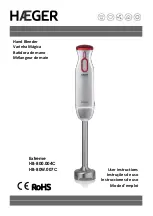
9
2
Electrostatic Discharge Precautions
Electrostatic discharge (ESD) can cause damage. Always observe the fol-
lowing precautions when installing or handling any board assembly.
1) Do not remove unit from its protective packaging until you're ready to
install it.
2) Wear an ESD wrist grounding strap before handling any component. If
you do not have a wrist strap, maintain grounded contact with the system unit
throughout any procedure requiring ESD protection.
WARNING!
Integrated circuits and fiber optic components are extreme-
ly susceptible to electrostatic discharge damage. Do not handle these com-
ponents directly unless you are a qualified service technician and use tools
and techniques that conform to accepted industry practices.
3) Hold boards by the edges only; do not touch the electronic compo-
nents or gold connectors.
4) After removal, always place the boards on a grounded, static free sur-
face, ESD pad or in a proper ESD bag. Do not slide the board over any sur-
face.
DC Power Supply Precautions
The following precautions should be observed when installing chassis
with DC power supplies.
1) Check nameplate ratings to assure there is no overloading of supply
circuits that could have an effect on overcurrent protection and supply
wiring.
2) When installing 48V DC rated equipment, it must be installed only per
the following conditions:
A) Connect the equipment to a 48V DC supply source that is electri-
cally isolated form the alternating current source. The 48V DC source
is to be connected to a 48V DC SELV source.
B) Input wiring to terminal block must be routed and secured in such
a manner that it is protected from damage and stress. Do not route
wiring past sharp edges or moving parts.
C) A readily accessible disconnect device, with a 3mm minimum con-
tact gap, shall be incorporated in the fixed wiring.
3) Grounding: reliable earthing of this equipment must be maintained.
Particular attention should be given to supply connections when connect-
ing to power strips, rather than direct connections to the branch circuit.
Configuring the LAN Extenders
Before connecting a LAN Extender to your network, configure a LAN
Extender for its hardware-selectable features via DIP switches located at posi-
tion
S1.
Refer to the diagram and switch chart below for settings.
F
EATURE
S
WITCH
F
UNCTION
D
EFAULT
AN
S1
Enables/disables Auto-Negotiation.
ON
Flow
Control
S3
Enables/disables Flow Control.
OFF
Selective
Advertising
S4
Used with Auto-Negotiation to advertise a specific
speed and duplex as determined by S5 and S6
OFF
Speed
S5
When ON, the LAN Extender Module operates at
100 Mbps.
When OFF, the LAN Extender Module operates at
10 Mbps.
OFF
Duplex
S6
When ON, the LAN Extender Module operates at
Full-Duplex.
When OFF, the LAN Extender Module operates at
Half-Duplex.
OFF
Host
S8
Sets the CO module as a HOST, allowing manage-
ment of the CPE (remote) module.
This switch is N/A for the CPE module; must be OFF.
ON
(CO module)
OFF
(CPE module)
Link Fault
Propagate
S9
Enables/disables Link Fault Propagate;
This switch is N/A for the CPE module; must be OFF.
OFF
S2 and S7 are reserved for future use — DO NOT CHANGE
S5 and S6 are only applicable if AN is set to OFF, or when using Selective Advertising.
Содержание LMC5220A
Страница 2: ...Notes 12 Notes ...


























